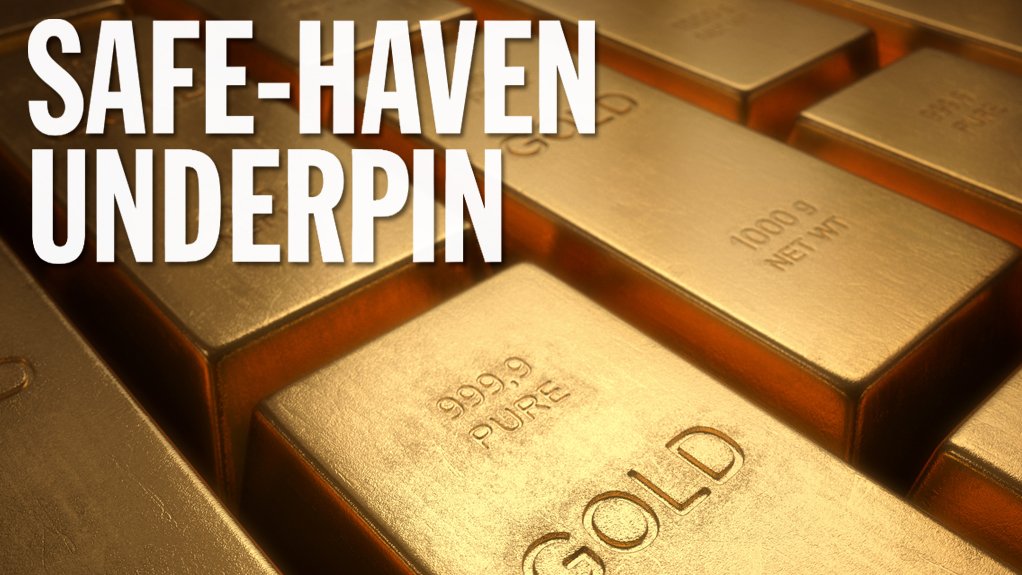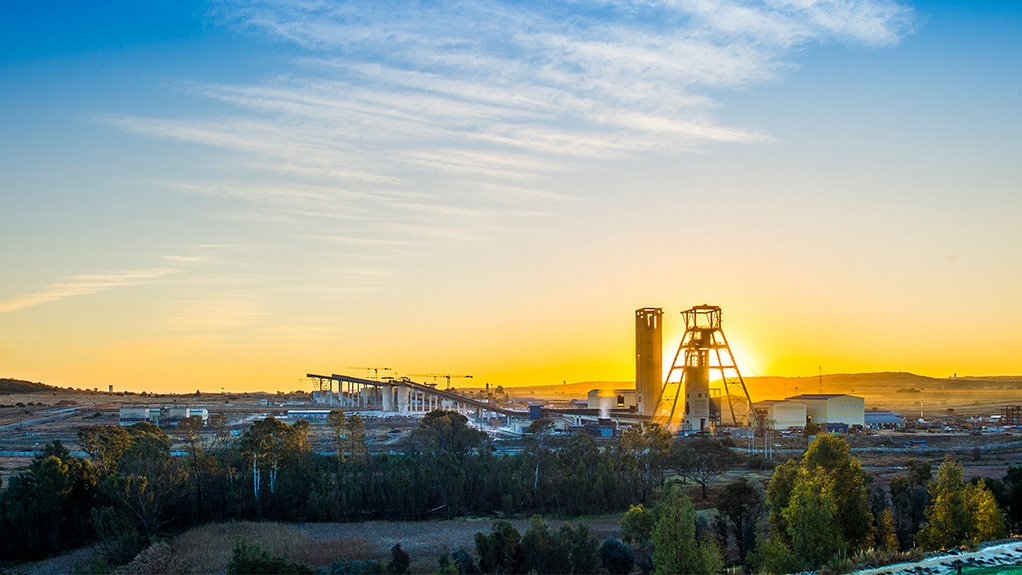Economic and geopolitical uncertainty supporting strong gold demand and prices








LOOKING AHEAD The World Gold Council says it expects another year of strong buying, adding that central bank buying – above the longer-term average – is likely to provide solid price support.
JOHN READE The performance of the gold price will depend on the direction of US interest rates and the strength or weakness of the US dollar against major currencies
ANDRÉ LOURENS The surge in demand from central banks over the past two years can also be linked to economic uncertainties, heightened inflation and geopolitical tensions
SVEN LUNSCHE Gold Fields achieved a “reasonable” set of financial results in 2023, with much of the impetus of the strong performance provided by the firmer gold price
CLINT O’BRIEN O’Brien expects the main market drivers for the upcoming year to stem from investment demand flowing from central bank consumption and the dollar outlook
SOUTH DEEP South African gold producers have had the additional benefit of a weak rand and therefore benefited from a significantly higher rand gold price
Amid economic uncertainties and rising inflation, total gold demand, including over-the-counter (OTC) demand, reached a new record of 4 899 t in 2023, thereby supporting the highest yearly average gold price of $1 940.54/oz, according to the World Gold Council’s (WGC’s) most recent ‘Gold Demand Trends Report’.
The gold price, which hit an all-time high in almost every currency globally except the Swiss franc and was driven by increasing demand, particularly from central banks and OTC investors, has benefited gold mining companies globally, explains WGC chief market strategist John Reade.
However, yearly gold demand, excluding OTC demand, fell to 4 448 t in 2023, a 5% decrease from a notably strong 2022.
Nonetheless, the central bank buying streak from 2022 continued at a “blistering rate”, with demand having reached 1 037 t last year, making it the second-highest on record, down just 45 t on the previous year.
Hence, the WGC says it expects another year of strong buying, adding that central bank buying – above the longer-term average – is likely to provide solid price support.
Minerals Council South Africa economist André Lourens says the surge in demand from central banks over the past two years can be linked to economic uncertainties, heightened inflation and geopolitical tensions.
Meanwhile, the WGC report notes that yearly jewellery demand held steady at 2 093 t, despite the high gold price environment, while yearly bar and coin investment declined mildly by 3% year-on-year as divergent trends in key Western and Eastern markets offset one another.
The gold volume used in electronics in 2023 also fell below 300 t.
Moving forward, Reade says the performance of the gold price will depend on the direction of US interest rates and the strength or weakness of the US dollar against major currencies, noting that US interest rates are likely to be lower this year and in 2025.
“We are convinced, as is the consensus of economic opinion, that interest rates will fall in the US in 2024 and 2025. Declining interest rates are usually associated with higher US oil prices and, if the US dollar weakens, that will also help gold.”
Geopolitical Tensions
With global geopolitical tensions becoming more unstable, such as the war in Ukraine, the conflict in the Middle East and potential tensions in the South China Sea, investors are drawn to safe-haven assets, particularly gold, which SA Bullion co-CEO Clint O’Brien describes as “immutable”.
Lourens adds that global geopolitical tensions heighten uncertainty, thereby impacting on growth and prosperity in the market, causing investors to “price in” the increased risk and/or cost of doing business associated with unpredictability.
Concerns over a country’s involvement in wars translates into long-term investment being postponed in regions such as the Middle East while resources are diverted to short-term mitigation mechanisms.
“Risk is high, so money flows to less risky business ventures. In these ‘high-risk’ areas, money flows to militaries and aid, and, to hedge against these uncertainties, investors and central banks opt to buy assets that are reliable, predictable and universally valued. Hence, an increased demand for asset classes like gold,” says Lourens.
Additionally, disruptions in trade and logistics, as a result of the conflict in the Red Sea, have resulted in higher input costs and heightened inflation, which Lourens says could coincide with higher global levels of inflation, as was the case in 2022.
He adds that increased input costs and inflation erode the value of cash-like assets, thereby driving investment in gold. Global conflict also creates subdued growth and wealth outcomes, which affect consumers who could, for example, demand less jewellery.
“The net outcome here is less certain and it is too early for us to speculate on the economic impact of tensions in the Red Sea. Suffice to say the gold price will act as a signal that reflects the underlying global economic and political conditions.”
Consequently, central banks may recalibrate their gold acquisition strategies accordingly.
“We are confident the risk in the geopolitical sphere has not been priced in. This means volatility and surprises lie ahead. There is going to be more divergence in price movements within the commodity complex than we’ve seen in the past,” adds Rand Merchant Bank co-head for resources sector solutions Julian Grieve.
He expects gold to remain firm on the back of safe-haven demand in the risky geopolitical environment, with Reade reaffirming that gold tends to perform well in the wake of geopolitical stresses.
Economic uncertainties and geopolitical tensions will, therefore, determine the extent of demand driven by central banks and private investment, says Lourens.
Hence, he expects demand for gold – for jewellery, from central banks, from private investment and from technological applications – to continue, with gold expected to be absorbed by the jewellery sector and private investment, where there is likely to be an increase in demand going forward.
Similarly, O’Brien expects the main market drivers for the upcoming year to stem from investment demand flowing from central bank consumption and the dollar outlook.
“We are at a particularly interesting inflection point and the main market drivers are going to primarily be the investment demand side,” he says.
Meanwhile, global mining production is steadily increasing to meet demand, which remains steady, but as gold deposits are exhausted, Lourens argues that new mines are needed to meet demand.
With about 40% of global exploration spend directed towards finding new gold deposits, mined supply is, therefore, strong, stable and growing, he adds.
Impact on South African Gold Mining
With an increase in demand for gold driven by economic uncertainty, gold prices have been steady – trading well above $1 800/oz over the past few years – with the price reaching a record high of about $2 235/oz in December 2023, says mining major Gold Fields corporate affairs VP Sven Lunsche.
South African gold producers have had the additional benefit of a weak rand and therefore benefited from a significantly higher rand gold price. Gold Fields achieved a “reasonable” set of financial results in 2023, with much of the impetus of the strong performance provided by the firmer gold price.
However, producer countries, such as South Africa, have also been affected by higher oil prices, driven by the conflict in the Middle East, while global conflicts have also impacted on trade routes, thereby causing delays in imports.
Lunsche assures, however, that these disruptions have had a limited impact on Gold Fields’ operations, as many key suppliers are based in-country, thereby enabling Gold Fields to obtain most of its equipment locally.
“On balance, political conflicts boost the gold price, but there are things to consider, in particular the direct and indirect impact of higher diesel and other carbon-product prices on mine costs.”
South Africa-specific challenges, such as loadshedding and an unstable labour environment, make it difficult for local producers to take full advantage of the higher gold price, he adds.
While underground strikes at mining operations and tense labour relations at mines have caused lower productivity and a loss of output, Lunsche says that Gold Fields’ South Deep mine has had a stable labour environment over the past four years.
The company has also installed a 50 MW solar plant at its South Deep gold mine, in Gauteng, to mitigate disruptions caused by loadshedding.
In addition to existing gold reserves in South Africa being deep and difficult to explore, the mining licence backlog at the Department of Mineral Resources and Energy has further hindered potential investments in gold exploration, says Lunsche.
South African gold mines rank among the deepest globally, posing significant competitiveness challenges, compared with other jurisdictions such as Ghana or Canada.
Consequently, gold mining has become increasingly complex, with diminishing grades in the reefs and escalating operational costs rendering operations more capital intensive.
However, there is potential opportunity in exploration to uncover new gold resources, which could offer more accessible extraction methods, and modern mining methods and systems, the Mineral Council’s Lourens says.
He adds that infrastructure challenges are also impacting on the growth of the economy and the mining sector.
To this end, the Minerals Council and its members are actively engaged in teams set up with the Presidency and business organisation Business for South Africa to urgently stabilise electricity supply, as well as rail and port services.
The participation of the private sector in energy and logistics will inject much-needed capital, management and project management, notes Lourens.
“For South Africa to compete effectively in the gold industry on the continent, concerted efforts are under way to address key constraints in the economy and in the mining sector. Resolving the above-ground challenges could unlock this potential and position the country’s industry to thrive domestically,” Lourens comments.
Comments
Press Office
Announcements
What's On
Subscribe to improve your user experience...
Option 1 (equivalent of R125 a month):
Receive a weekly copy of Creamer Media's Engineering News & Mining Weekly magazine
(print copy for those in South Africa and e-magazine for those outside of South Africa)
Receive daily email newsletters
Access to full search results
Access archive of magazine back copies
Access to Projects in Progress
Access to ONE Research Report of your choice in PDF format
Option 2 (equivalent of R375 a month):
All benefits from Option 1
PLUS
Access to Creamer Media's Research Channel Africa for ALL Research Reports, in PDF format, on various industrial and mining sectors
including Electricity; Water; Energy Transition; Hydrogen; Roads, Rail and Ports; Coal; Gold; Platinum; Battery Metals; etc.
Already a subscriber?
Forgotten your password?
Receive weekly copy of Creamer Media's Engineering News & Mining Weekly magazine (print copy for those in South Africa and e-magazine for those outside of South Africa)
➕
Recieve daily email newsletters
➕
Access to full search results
➕
Access archive of magazine back copies
➕
Access to Projects in Progress
➕
Access to ONE Research Report of your choice in PDF format
RESEARCH CHANNEL AFRICA
R4500 (equivalent of R375 a month)
SUBSCRIBEAll benefits from Option 1
➕
Access to Creamer Media's Research Channel Africa for ALL Research Reports on various industrial and mining sectors, in PDF format, including on:
Electricity
➕
Water
➕
Energy Transition
➕
Hydrogen
➕
Roads, Rail and Ports
➕
Coal
➕
Gold
➕
Platinum
➕
Battery Metals
➕
etc.
Receive all benefits from Option 1 or Option 2 delivered to numerous people at your company
➕
Multiple User names and Passwords for simultaneous log-ins
➕
Intranet integration access to all in your organisation
























